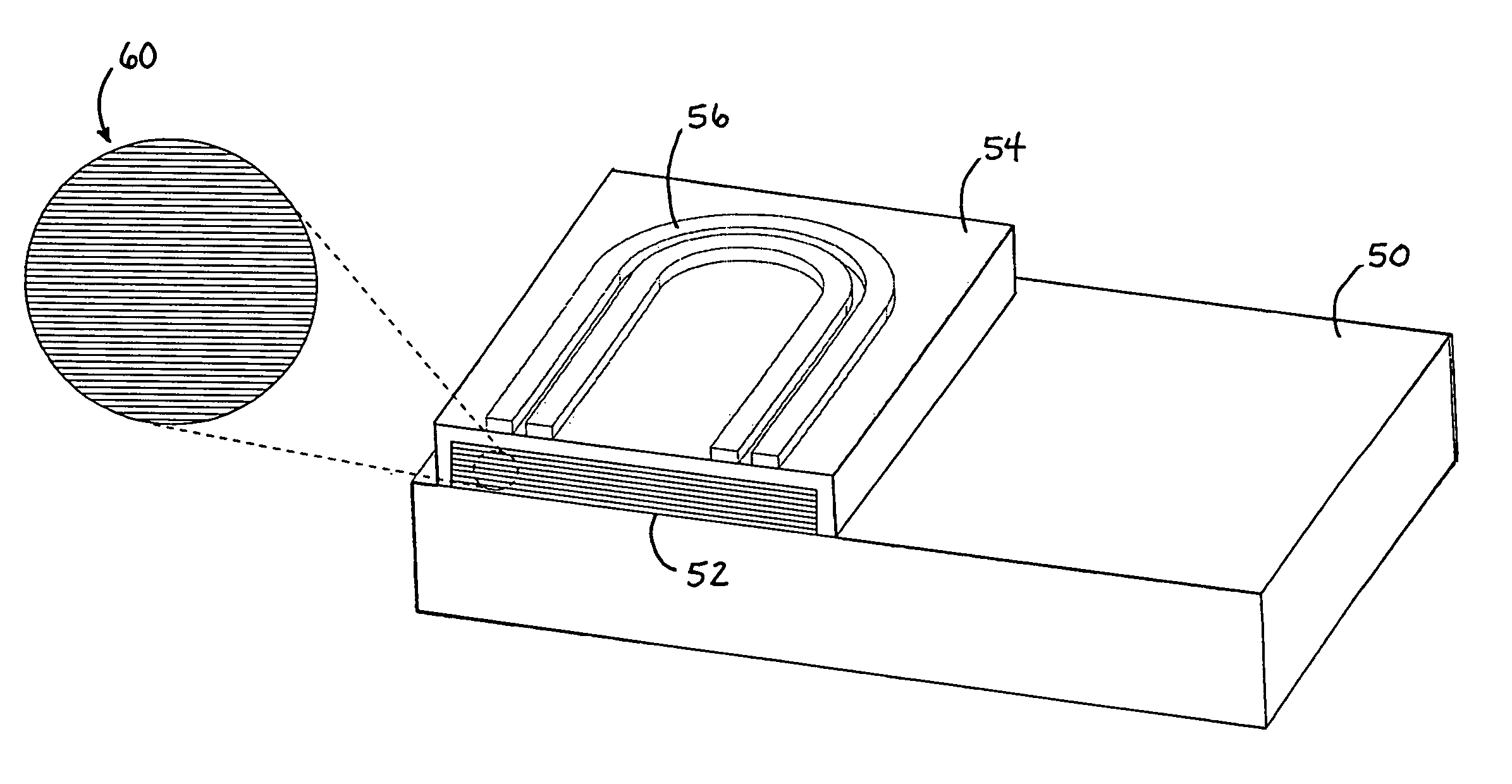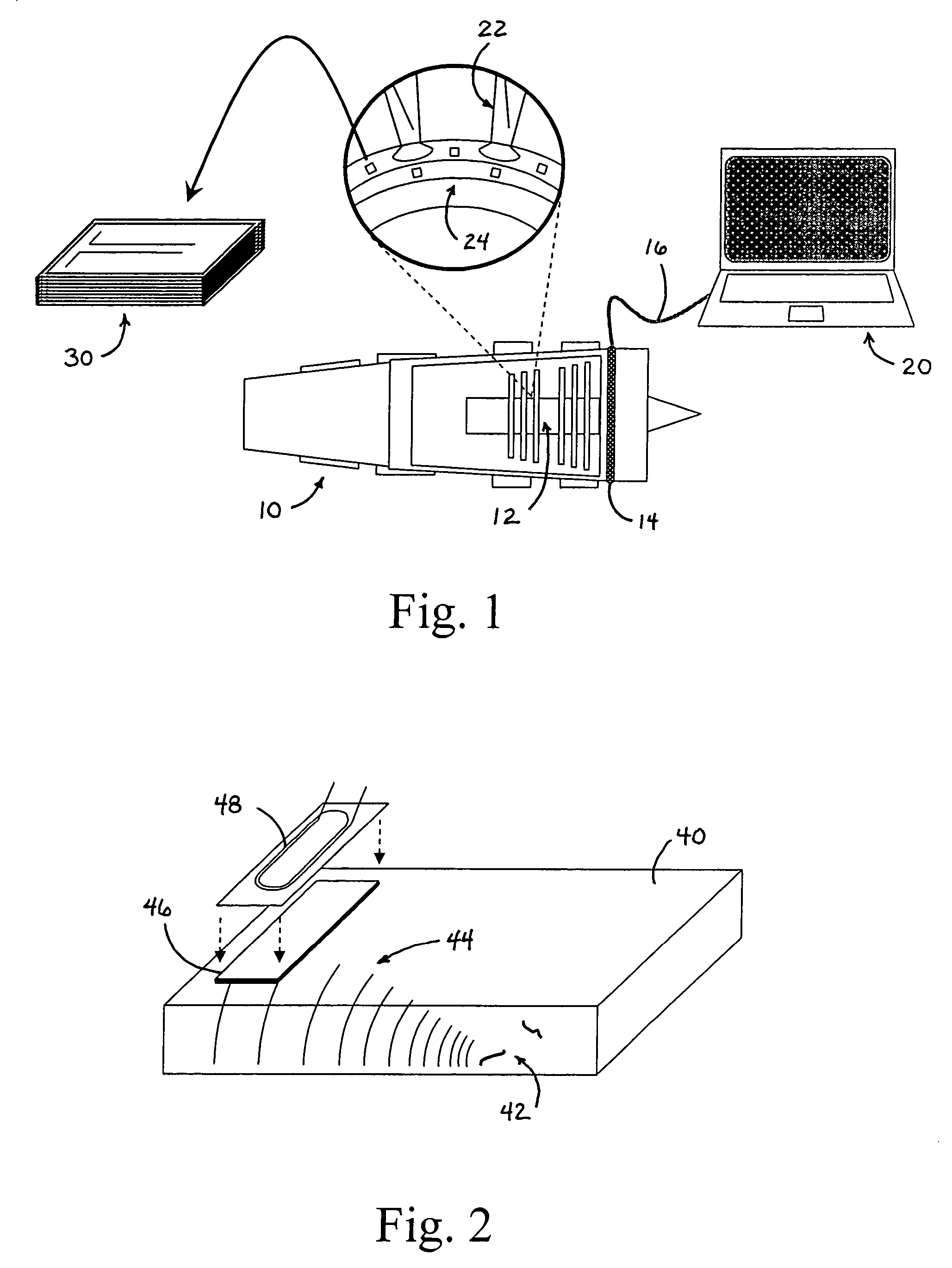Systems and methods for flaw detection and monitoring at elevated temperatures with wireless communication using surface embedded, monolithically integrated, thin-film, magnetically actuated sensors, and methods for fabricating the sensors
a technology of wireless communication and flaw detection, applied in the direction of magnetic body analysis, solids analysis using sonic/ultrasonic/infrasonic waves, magnetic resonance analysis, etc., can solve the problem of limited access to such systems, presently no operational sensors for direct measurement of material damage (cracking), and relatively easy ae measurements. problem, to achieve the effect of effective structural health management and prognosis
- Summary
- Abstract
- Description
- Claims
- Application Information
AI Technical Summary
Benefits of technology
Problems solved by technology
Method used
Image
Examples
Embodiment Construction
Probabilistic Analysis of Prognosis Uncertainty (Preliminary Discussion)
[0042]Probabilistic analyses (detailed in the above referenced Provisional Patent Application, the disclosure of which has been incorporated herein by reference) suggests that continual monitoring of with sensors that are 6 to 10 times less sensitive than those presently used in depot inspections (about 30 mils) can achieve high component reliability (low probabilities of failure). This benefit results from the continual feedback that enables damaged components to be identified and removed from service throughout their life. Although this concept of trading-off interrogation sensitivity for frequency of interrogation is believed to be generally true, the specific minimum sensitivities required for effective onboard sensing will depend on the critical crack size associated with the specific fatigue critical location. That is, for the specific case of a bolt-hole in a generic disc, for example, the critical crack ...
PUM
| Property | Measurement | Unit |
|---|---|---|
| thickness | aaaaa | aaaaa |
| thickness | aaaaa | aaaaa |
| size | aaaaa | aaaaa |
Abstract
Description
Claims
Application Information
 Login to View More
Login to View More - R&D
- Intellectual Property
- Life Sciences
- Materials
- Tech Scout
- Unparalleled Data Quality
- Higher Quality Content
- 60% Fewer Hallucinations
Browse by: Latest US Patents, China's latest patents, Technical Efficacy Thesaurus, Application Domain, Technology Topic, Popular Technical Reports.
© 2025 PatSnap. All rights reserved.Legal|Privacy policy|Modern Slavery Act Transparency Statement|Sitemap|About US| Contact US: help@patsnap.com



